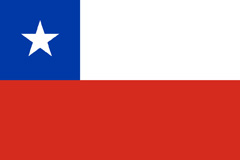Chile: Designing a Robust Renewable Energy Policy Environment and Integrating Wind with the Energy Mix
 The government of Chile is supporting non-conventional renewable energy by harnessing significant resource potential. In 2008, the government added to the existing general energy law by creating a renewable portfolio standard requiring 5% of electricity to come from non-conventional renewable energy sources by 2014, gradually increasing the requirement to 10% by 2024. Chile also created several energy-specific ministries within the government to help manage and develop the clean energy sector. Despite these efforts and a wind resource potential of 40 gigawatts, the amount of wind energy deployed in Chile is only 1% of the country’s total energy capacity (ITAMS 2013).
The government of Chile is supporting non-conventional renewable energy by harnessing significant resource potential. In 2008, the government added to the existing general energy law by creating a renewable portfolio standard requiring 5% of electricity to come from non-conventional renewable energy sources by 2014, gradually increasing the requirement to 10% by 2024. Chile also created several energy-specific ministries within the government to help manage and develop the clean energy sector. Despite these efforts and a wind resource potential of 40 gigawatts, the amount of wind energy deployed in Chile is only 1% of the country’s total energy capacity (ITAMS 2013).
Significant wind resources in Chile are located largely in the remote Patagonia region. Thus, wind resources are most easily harnessed for remote applications, rather than to power urban centers (ITAMS 2013). To support increased wind deployment at the rural level, the Clean Energy Solutions Center partnered with the Renewable Energy Center of Chile (RECC) on efforts to assess wind-diesel hybrid systems for energy access efforts in remote Chilean communities. Based on this partnership, RECC is supporting various rural wind energy efforts.
